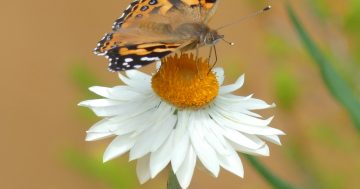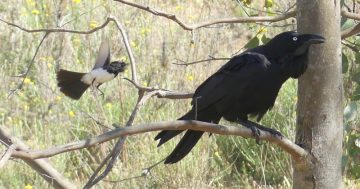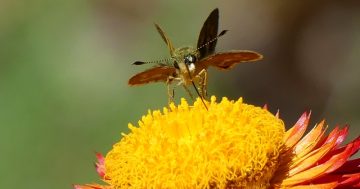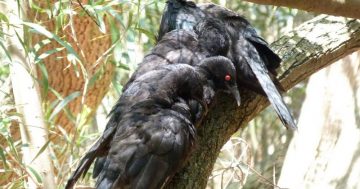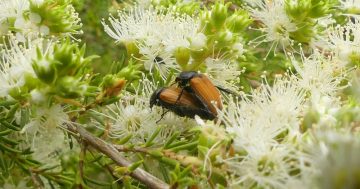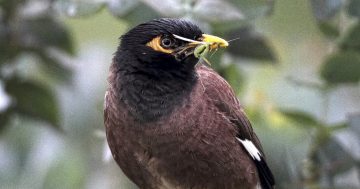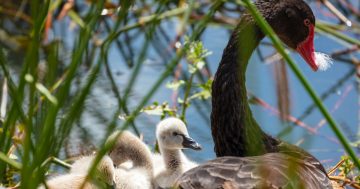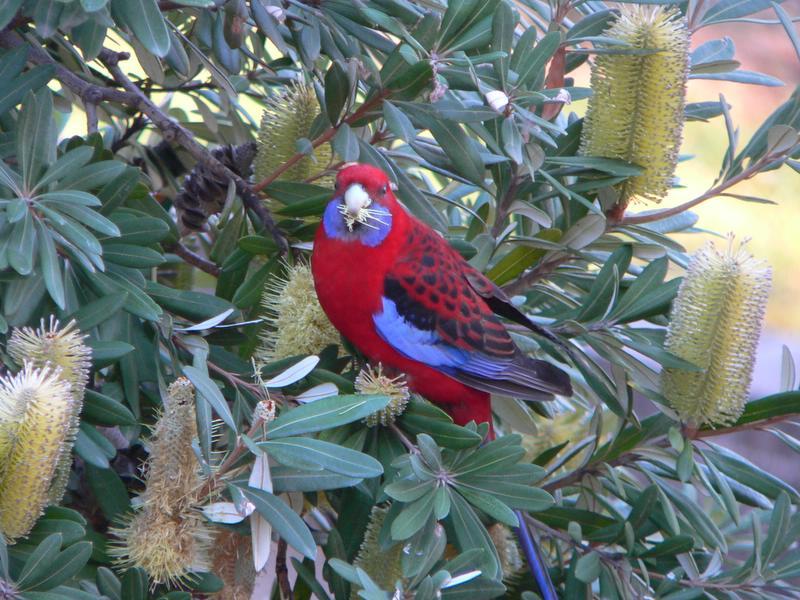
Crimson Rosella feeding on banksia flowers. Photo: Ian Fraser.
Rosellas are one of the great pleasures of living in Canberra for me. Their colour, constant seeming exuberance, cheery chirrups and whistles and ability to fit comfortably into the artificial landscapes of suburbia combine to make the world a better, brighter place.
Most of this applies especially to the familiar red and blue Crimson Rosellas, but the smaller, equally beautiful but more demure Eastern Rosellas are also part of our lives, though less obviously. They are equally colourful, letterbox red rather than deep crimson, and with white cheek patches where those of the Crimsons are blue.
There are six species of rosella found across most of Australia, except the dry inland. Mostly there is only one species in any given place so here we are lucky to have two to enjoy, but there’s more to it than that.
Though the maps show both Crimsons and Eastern co-existing, it’s actually quite unusual for the two to occur together as they do in Canberra. Canberra’s location is part of the reason, at the foot of the forested mountains on the edge of the remnants of the grassy woodlands.
Crimsons are primarily birds of the mountain forests and taller forests along the rivers, while Easterns are found naturally in the woodlands of the plains, so they were both in the general vicinity when Canberra was developed. The gardens and parklands of the new city provided good habitat for each of them, so both adapted to the developing suburbs.
They divide the area according to their own preferences. Crimsons are primarily found in gardens and tree plantings, feeding on fruit, seeds, nectar and insects. They prefer to be up in the branches but will feed on the ground on fallen seed or berries and, of course, they readily come to backyard bird feeders.
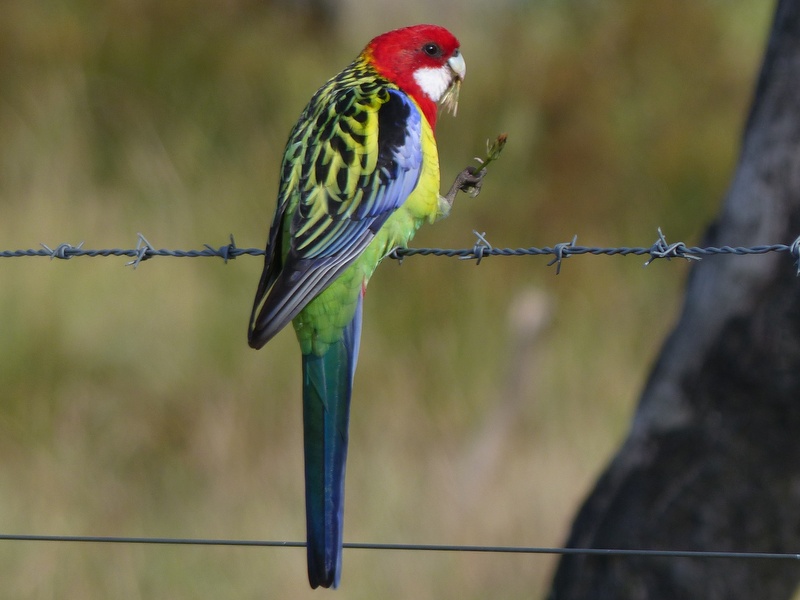
Eastern Rosella eating seeds. Note the green mottle back and white cheeks. Photo: Ian Fraser.
On the other hand, Eastern Rosellas tend to stay in more open areas, including parklands near houses, though they’re not keen to come into gardens and don’t feed as readily on feeders. Apart from anything else, they get bullied by the bigger boofier Crimsons. They’re most commonly found feeding on the ground on seeds and flowers, though they will also feed in trees and bushes.
The name rosella comes via a somewhat convoluted path. Indeed, when I first heard the tale, I was slightly sceptical as it sounded a bit like a tall story.
When the Sydney colony was established, it took a little while for settlers to venture a little inland to the rich grassy woodlands in the area we now know as Parramatta, but then called Rose Hill. There they found some new, very beautiful parrots that they called Rose Hill Parrots, which in time was abbreviated to Rose Hillers, and ultimately Rosellas.
As I said, it sounds implausible, but it’s easy enough to follow the story from original sources. Oddly, though, this was only used as a name for Eastern Rosellas, Crimsons remained just ‘parrots’ for at least another hundred years.
Crimsons nest around Canberra in old trees in the hill reserves. Like nearly all parrots, rosellas nest in tree hollows. The pairs stay together throughout their lives, roosting side by side every night except when the female is sitting on eggs or chicks. At that stage, the male spends the night just outside the hollow.

Young Crimson Rosella with green body and wings, which will later turn red. Photo: Ian Fraser.
When the youngsters become independent, they are mostly olive green, becoming mottled red and blue as their adult plumage grows through. In autumn, rowdy gangs of these teenagers burst through the suburbs, descending on bird feeders and generally carrying on.
Occasionally a ‘mixed pair’ forms, one from each species. Perhaps these are young inexperienced birds, but we don’t really know. The resulting hybrid is obviously a mix of the two species but is nearly always sterile.
Rosellas are truly beautiful birds. If they only lived in remote parts of Australia, people would spend time and money going to see them. As it is, they’re an everyday part of life in Canberra, and I fear that sometimes we take them for granted because of that. They don’t deserve that.
Ian Fraser is a Canberra naturalist, conservationist and author. He has written on all aspects of natural history, advised the ACT Government on biodiversity and published multiple guides to the region’s flora and fauna.














